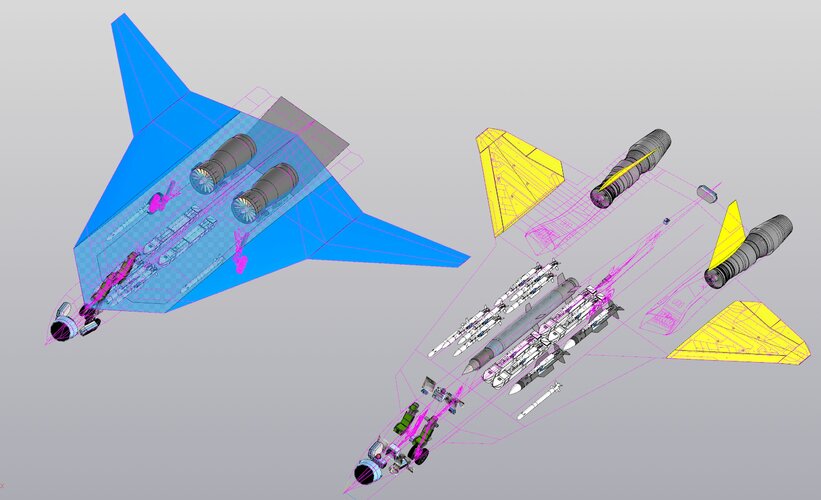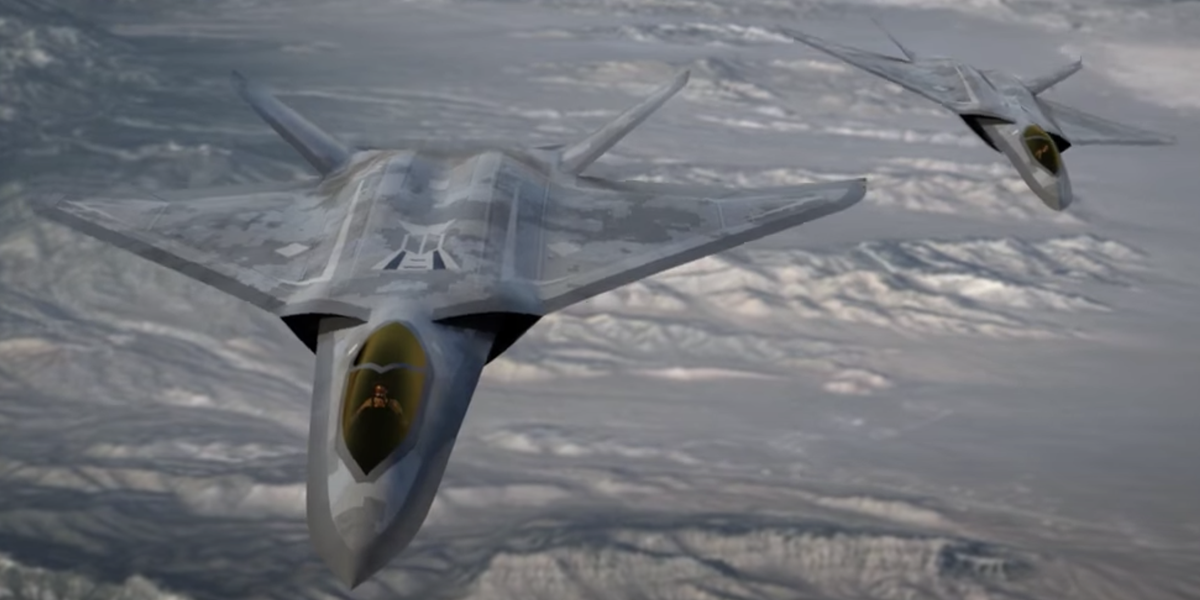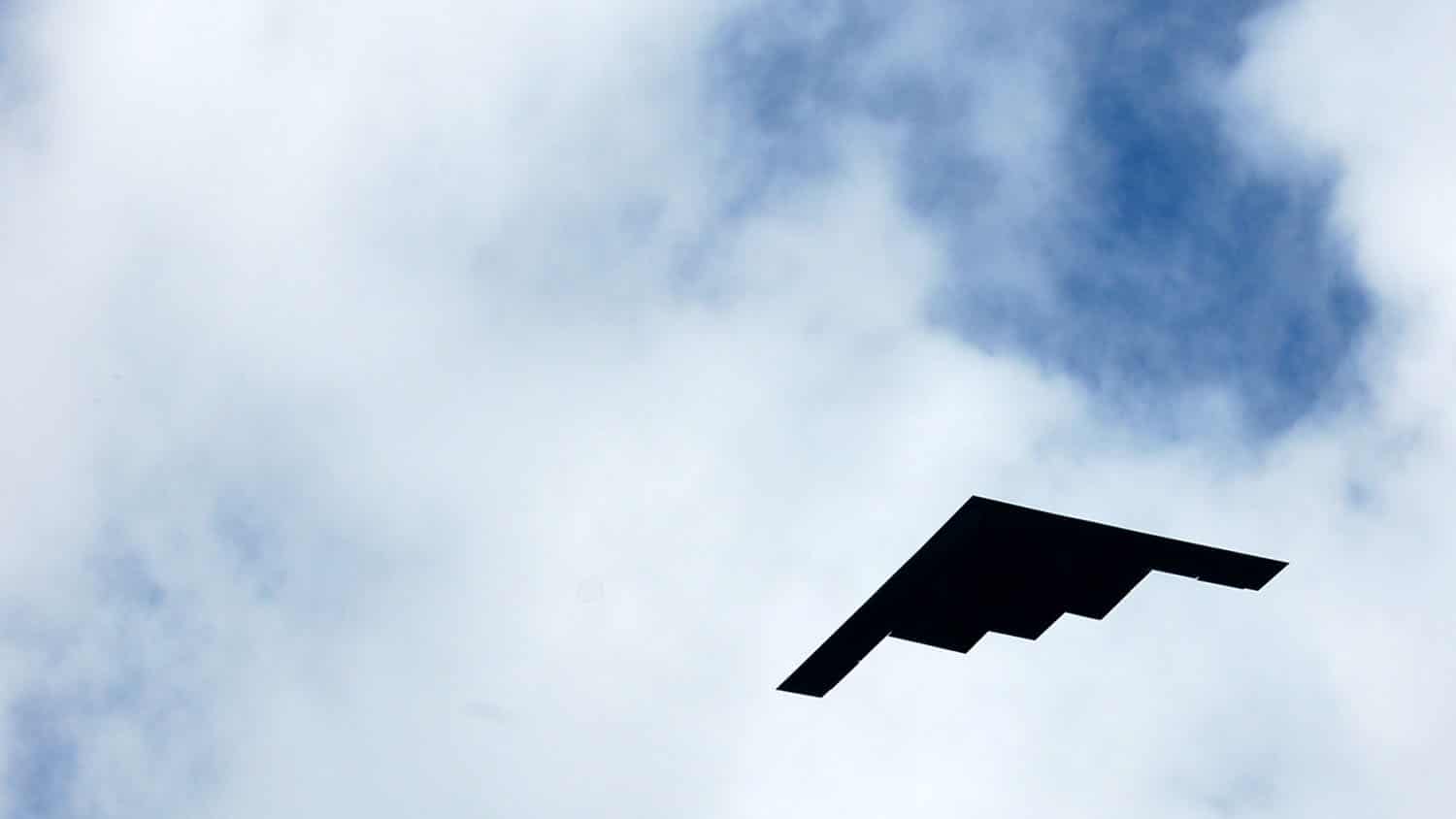I don't think the USAF is going to use any of its old aircraft as UAVs. There's little reason to; it isn't cheap in terms of airframe cost and maintenance and it doesn't add much capability sans pilot. They appear to be looking at much cheaper subsonic CCAs, some of which would be near disposable and unarmed, and others larger and perhaps carrying short range weapons. The key enabler is range and low cost: an XQ-58 even tricked out is a < $10 million airframe that can do a ~1500/2400km round trip without an airfield. Tryin to turn QF-16s into full up loyal wingmen isn't going to give the numbers or the range compared to a hot production line building some kind of derivative of that.
I see. I didn't know that would actually be a more expensive venture, but come to think of it, as the parts for legacy fighter aircraft become fewer and fewer, the overall price for the parts, as well as the overall price for the aircraft in question will increase, so the way I see it, creating wholly new loyal wingmen drones purposed to be able to accompany the NGAD manned fighter component all the way to its maximum combat radius range, and loiter for as long as possible, while having several weapons, sensors, avionics and other technologies to help assist the NGAD manned fighter component in their missions, is simply the much wiser choice at this point.
However expensive they may be (I think the Drones will have a quarter or more of the possible cost of the NGAD manned fighter component itself), the program itself will be more economical in the long run, and the drones themselves will prove beyond their worth if they are able to do even half of what they are supposed to be capable of. Plus the absence of a pilot saves further money and materials that would have been used to make the necessary systems and amenities for the pilot, and instead focus on creating enough room for all the necessary technologies needed for the drone to operate at full power, and with power effiency.
I think the initial boost/glide hypersonics will be so expensive that they are few in number and the high speed will limit their guidance modes to static targets. But I think HACM will find a sweet spot of Mach 5-6 where relatively cheap production materials are viable (both HAWC designs use an all 3D printed combustor) and AAM type terminal guidance modes readily achievable for moderate cost. As such I expect it to be a multi domain weapon that can engage large aircraft in A2A (AWACs, MPAs, tankers, bombers, etc) , on top of being an anti-shipping weapon and hitting land targets. I think it will cost an order of magnitude less than the TBG type weapons and be far, far more prolific. That said, it seems pointless to have a large 300nm/500km weapon on your high speed stealth platform. Perhaps the weapons bay(s) will be able to accommodate it in a pinch, but it will be a huge weapon relative to current AAMs.
That could be one of the reasons why I speculate that the NGAD has to be much bigger then usual fighters before it, at the cost of maneuverability and to an extent, speed. It's also possible (And as suggested by the CSBA on their report entitled "Trends In Air-To-Air Combat: Implications For Future Air Supremacy"), though uncertain, that during combat, it is ideal that the NGAD flies at subsonic speeds so as to reduce heat from friction, and therefore, reducing the chances of being detected by the enemy's IR sensors. The much-longer ranged weapons will more than compensate for the increasing gap between fighters, and in many cases, will even exceed whatever speed the enemy fighters are at the moment it is fired. Thus, no matter how fast these fighters can get, they can run, but they cannot run far enough. They can only go so far until they get struck down by a missile, and then straight up write off that aircraft in their registry. That is unless, the enemy aircraft itself can go hypersonic.
And while Hypersonic Missiles that are versatile and adaptable to every target and situation sounds tempting, and practical (As only one type of missile will be produced for the NGAD, saving money), there are already ongoing very long range projects, such as the Long Range Engagement Weapon (LREW) and AIM-260 Joint Advanced Tactical Missile (JATM), and unless these projects are shelved or merged into the hypersonic missile program, it's likely that the NGAD will be armed with a variety of missiles, each specified for different roles, same as previous generations.
The question of how many such missiles it can contain, depends on how much space that it can provide for its internal weapons bays. And if the NGAD will be bomber-sized, then that's probably enough space to add a sufficient number of missiles, hypersonic or not, inside. It can possibly take a page from the B-2 and B-21, and have a rotating drum for their missiles, but that's just its possible layout, and of course, we don't know if this is gonna become reality at some point. As such, we can only speculate on how large those weapons bays will be, and by extension, how many weapons can it store, which is tied directly to how big the NGAD manned fighter component will be.
I doubt NGAD borrows much from other programs the way B-21 allegedly has - if nothing else the engines are definitely going to be platform specific. That said if there's any existing coatings, avionics, or other technology that is easily transferable I'm sure it will be - the USAF seems to have turned a new leaf recently (let us say post F-35) when it comes to using technology that is "good enough", and for some facets of NGAD I would guess they use what is handy.
To that, I agree, as I stated earlier. We may never know what the NGAD would be at all, not even in mere appearance and capability, but one thing is for certain: The NGAD won't be sharing any parts with any legacy aircraft, and that extends to the F-22, F-35, and maybe even the B-21, though they belong to the same aircraft generation. What I might disagree on, is that there are some technologies, like avionics, coatings, weaponry, sensors, and whatnot, that can be easily transferable. The research that might be made for the NGAD in all fields will be strictly be exclusive to the NGAD only, same as if in the far future, technologies and parts that belong to the future Seventh-Generation Fighter will be exclusive to it, and not be transferrable to the NGAD as a whole. Maybe it can be easily transferable between similar units of the NGAD, as they might possibly be modular, similar to the B-21, but the tech might not be cross-compatible with other aircraft, as mentioned earlier.
As such, parts that belong the NGAD manned fighter component and the Loyal Wingmen drones, might be strictly be transferrable between them, and not be transferred to other aircraft. And assuming that the USAF might proceed with the 15-year airframe span for the first NGAD models, after which they will be replaced by upgraded versions, that also means that there might eventually be a surplus of parts that will never be transferrable to other existing aircraft, which may further increase the price as a result.
And finally, we know to an extent that "Good Enough" is NOT Good Enough to the USAF. If they can make it immensely better in all ways than before, they most definitely would. And that same fate will happen to the NGAD should the USAF begin any kind of work and research into their future Seventh-Generation Fighter. Publicly, they made it that certain pre-existing technologies can be easily transferrable and useful to some future programs, but that could just be on the surface, and merely said to appease some of the Political figures that are giving them the budget they need. In actuality, they will most likely build up on this technology to the point that it becomes vastly and radically different from where it sprang from, it might as well be something innovative to the public, and they will definitely parade it around as such, without telling or revealing the full details, just like what they did with the NGAD "Demonstrator".
All they said is that they flew it, and broke records while doing it, and while it leads us to think that they have made immense advancements as early as 2 years ago, the truth is obviously far beyond that. At that point, even that Demonstrator, despite all that it achieved, is "Not Good Enough" for the USAF, and they will definitely make better in the end.
Thus all in all, the NGAD is possibly a wholly unique and original program in itself, unlike the B-21 that heavily borrows from the B-2 and to an extent, the F-35, while having its own unique and innovative capabilities. The NGAD might be a purely new and different aircraft whose parts and statistics stem from immense research that radically changes everything, not just about how one makes aircraft or how one battles with said aircraft, but one that changes and shifts the very name of the Air Supremacy game as a whole. The NGAD might be the stepping point from which fighters change from smaller, more maneuverable aircraft that carry a small amount of weaponry, to larger and less maneuverable but long-ranged aircraft that can properly dish out some damage in ways that bombers can't, and be escorted by drones that fulfill the maneuverability aspect of the mission, as well as performing a variety of roles that are best suited to their capabilities.
And to boot, these new fighters will become the Jack-Of-All-Trades and Master-Of-All-Trades aircraft that are sorely needed in today's changing battle dynamic, and above all, ones that can interconnect with every other sensor in the battlefield, and thus create an immense map of the entire battlefield, which gives it enough information to easily decide the next step of air combat as fast as possible, indirectly and ironically fulfilling the OODA loop that John Boyd taught, despite his disdain for aircraft that are anything but super-maneuverable, sensor-less and missile-less gunfighters.
I think we're in no position who to know who wins the technology fight between the US and PRC. We basically know nothing about the state of the art at this point, given the secrecy from both sides. It does seem quite clear Russia will not be able to catch up, both in terms of technology and most especially in terms of production numbers.
True statement, both countries have their secrets to keep that can make or break their very own military might as a whole. But I can confidentially say that the US has been in the game for years, and by the looks of it, they won't let up, even if their enemies are seemingly getting inches closer to them and closing the gap greatly. No matter how degenerate their society becomes, one thing remains for certain: The US would rather wish to remain #1 in the Military, and they wouldn't let any other country, even their allies, one-up them in making new military innovations and keeping their sphere of power in the same level all throughout.
Thus in order to retain the status quo that they enjoyed, the US has to always stay at #1, and then ensure that the gap between #1 and #2 is very wide, and then keep on making it wider from there. Only then can the status quo be remained, and their increasing innovations be enough of a deterrence to keep their enemies at bay and prevent them from changing it outright.
Disclaimer:
Everything I said is just from speculation and theory based from what I've read about the Next Generation Air Dominance, and the Sixth-Generation Fighters as a whole, so take it with a grain of salt, just as I would take many possible military statements regarding these programs with a grain of salt, and a seed of doubt, knowing that they have something immensely or "infinitely" greater than what they are saying publicly.




